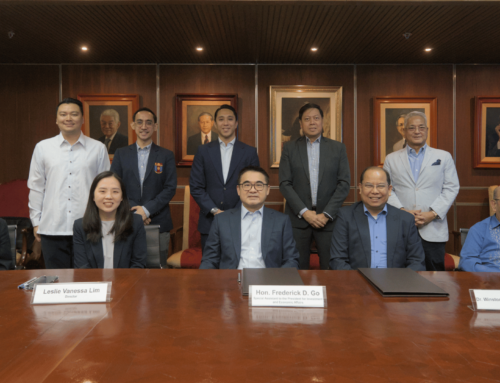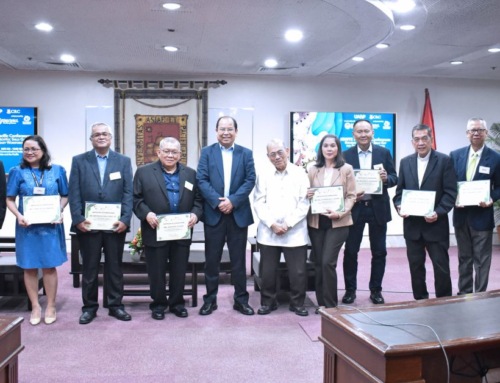CRC in the Digital Sector — With Filipino creatives making waves around the world, there’s little question that the country’s creatives are among the best in the world, agreed the speakers at a forum on “Arts, Entertainment, and Advertising to Steer Philippine Economy” last July 9, 2021. But if the Philippine creatives sector is going to grow, then the Philippines is going to need to bring in investors, particularly those that can bring in new digital platforms and technologies which Filipinos can use to bring Filipino stories to the world.
The Forum, which was the fifth in a series of fora on the potential impacts of opening up the Philippine economy to more Foreign Direct Investments (FDIs), was and co-organized by the Center for Research and Communication, Konrad-Adenauer-Stiftung Philippines Office , Censei, the DAP Graduate School of Public and Development Management, PSPA (Philippine Society for Public Administration), and Blueprint.PH, having been initiated by the Philippine Department of the Interior and Local Government (DILG).
CRC Director of Research Dr. Bernardo M. Villegas was one of the guest speakers at the event, taking questions alongside. Among the speakers at the event were Blueprint.PH research director Ms. Ella Kristina D. Coronel, American Chamber of Commerce of the Philippines Senior Advisor Mr. John Forbes.
“New platforms which we can use and monetize”
One of the major themes of the event was the need to attract investors who would give the country’s creatives better access to various digital media platforms, as opposed to investors who would buy into or establish new media outlets. (Another major theme of the event was the rise of Media, IT, and Telecommunications as what Dr. Villegas called a single “super-sector”, covered in our article here.)
Rising the topic, Ms. Coronel – who had given a detailed presentation about the most popular performers viewed by Philippine audiences at the time of the forum – noted that investments aren’t necessarily in terms of establishing new media outfits, but also in terms of providing digital platforms. “We have [these] new platforms which we can use and monetize,” she says, noting that these are often “more amenable for our [creative inputs and] talents.”
She listed new independent pop music acts such as Skusta Clee, EX Batallion, and SB19, which had recently begun making waves in the Philippines’ online entertainment landscape. “They are not part of the bigger corporate media groups,” she points out. “They used guerilla strategies which they develop in the underground circle, and they’re able to put themselves out there through Facebook, thorough some investments from those who believed in them.”
“If you’re an independent artist, you could create your own [YouTube or Facebook] account. You can set up a Patreon account. Explore these accounts, [they have] monetization value and they offer chances for collaboration… this is a revolution, actually, happening in the cloud if you look at the data.”

“We have to get out of the old mentality that we have to be part of a corporation to be able to deliver our art,” she said.
Citing the popularity of Korean singers and Korean telenovelas in the Philippines, Mr. Forbes agreed.
“Netflix spent 500 million dollars in Dragon Studio in Soul.,” Not to establish a media company, he says, “but to fund twenty-four Korean telenovelas in 2020. How much money did that create for the Korean economy?”
“It’s a model for the Philippines.”
Why doesn’t Lucasfilm have a studio in Manila?
However, it’s a big loss whenever the companies that run these digital platforms don’t have a significant presence in the Philippines, as Mr. Forbes points out.
“Who mans the [Lucasfilm] studio in Singapore? Filipinos! Why doesn’t [Lucasfilm] have a studio in Manila so Filipinos can work here and make entertainment that can be watched around the world?”
Part of the reason such companies don’t go to the Philippines is attributed to the limits placed on mass media by the 1987 Constitution of the Philippines. Article XVI, Section 11 of the constitution states that “the ownership and management of mass media shall be limited to citizens of the Philippines, or to corporations, cooperatives or associations, wholly-owned and managed by such citizens.”
However, a piece of legislation, Resolution of Both Houses 2 (RBH 2) is currently pending in the Philippine legislature, proposing that ownership restrictions in key economic industries, enshrined in the Philippines’ 1987 constitution, be relaxed. If passed, the resolution would allow future Philippine legislatures to pass laws which would allow foreign individuals and corporations to own a controlling stake in Philippine companies within these industries – including telecoms and media.
Dr. Villegas, agreeing with Mr. Forbes, adds that “when foreigners discover that they can only own forty percent, thirty percent here, they won’t risk their long-term capital. Which comes always with technology.”
“We can actually be among the frontrunners in the [Fourth Industrial Revolution] because we have the human resources. But we don’t have the long-term capital. That’s another reason why we have to remove all those restrictions.”
“[Facebook and YouTube have] the biggest penetration,”, Ms. Coronel adds. “But the country is not getting a cent out of it. If we open up, new players could come put something here,” and “at least we could get a piece of the pie.”
“We are doing this, somewhat with Trese,”
Ms. Coronel adds that investors bringing such platforms into the country would also be able to help significantly in terms of increasing the representation of Filipino narratives in international media.
“The [talent] worldwide is composed of mostly Filipino designers, Filipino animators, Filipino singers,” she says. “But still, our original content is not out there. If we have more investors, [they can] come in and enable our environment to have uh a platform for us to be able to [get our content out there.]”
“We are doing this, somewhat with (Filipino Komiks Inspired Netflix Series) Trese,” she points out, but laments that the production still needed to be funded by foreign nationals. “Our content really has potential,” she muses, in a global media environment where “more and more content is needed.” To be able to meet that need, she says, “more investments are needed.”
“Our greatest assets are our talents”
“Our greatest assets are our talents,” reiterated Dr. Villegas. “We’re among the best singers, best designers, name it. But we need a lot of capital for the infrastructure. And that’s not available locally.”
“The talent is there,” likewise insists Mr. Forbes. “If the environment is enabled, the investors will come.” • | CRC Staff Writer ||
———————————————————–
The Center for Research Communication is the research and consultancy link to Philippine business opportunities, uniquely poised to help you with technical and financing evaluation, demand evaluation, partnership development, project impact evaluation, and team upskilling and learning. To find out more about CRC, send an email to [email protected], or follow us on LinkedIN at linkedin.com/company/centerforresearchandcommunication. You can also find us on Facebook at facebook.com/centerforresearchandcommunication.
#Investments #ForeignDirectInvestments #FDIs #DigitalEconomy #PhilippineDigitalEconomy #Trese #Tresenetflix #SkustaClee #EXBatallion #SB19 #coreeconfora #economicrecovery #PhilippineEconomy #businessopportunities #consultancy





